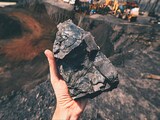Ancient Egyptians were not only skilled in the field of medicine, but also attempted to treat cancer, according to a new study. It is based on the analysis of a pair of 4,000-year-old skulls and published in the journal Frontiers in Medicine. The result is a combined effort of researchers from Universities of Tubingen in Germany, Cambridge in England, Barcelona and Santiago de Compostela in Spain. They found the evidence of brain tumour extraction, something that was much ahead of the time, in patients thousands of years ago.
"We wanted to learn about the role of cancer in the past, how prevalent this disease was in antiquity, and how ancient societies interacted with this pathology," Tatiana Tondini, a researcher at the University of Tubingen and first author on the paper, said in a statement.
The skulls they examined belong to University of Cambridge's Duckworth Collection, as per Newsweek. The first, dating from between 2687 and 2345 BCE, belonged to a 30- to 35-year-old male, while the second, dating from between 663 and 343 BCE, belonged to a female over the age of 50.
Researchers said they found a large lesion that indicates abnormal growth of tissues. There were also several other smaller lesions dotted around the skull that suggest that the growth had metastasised.
The team was also stunned to find knife marks around each of these lesions, as if someone had purposefully tried to cut out these cancerous growths.
"When we first observed the cutmarks under the microscope, we could not believe what was in front of us," said Tondini.
"It seems ancient Egyptians performed some kind of surgical intervention related to the presence of cancerous cells, proving that ancient Egyptian medicine was also conducting experimental treatments or medical explorations in relation to cancer," said co-author Albert Isidro, a surgical oncologist at the Sacred Heart University Hospital in Spain.
The second skull also displayed a large lesion consistent with a cancerous growth.
However, researchers sounded a word of caution, saying it is difficult to give definitive statements while studying skeletal remains.















